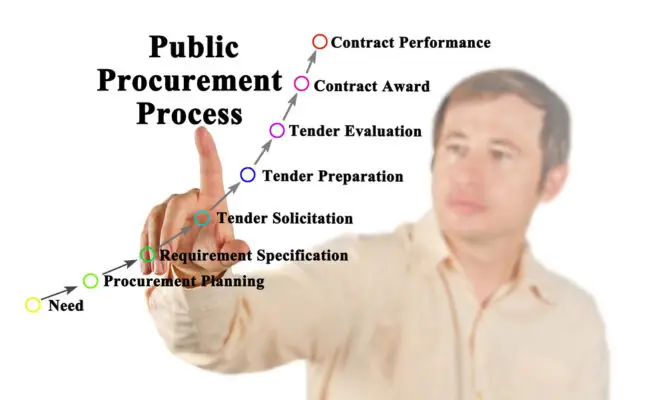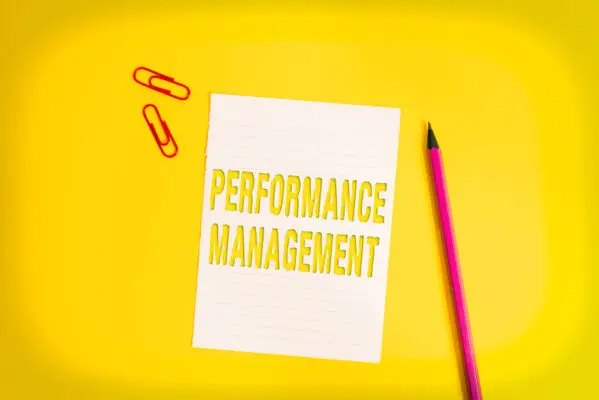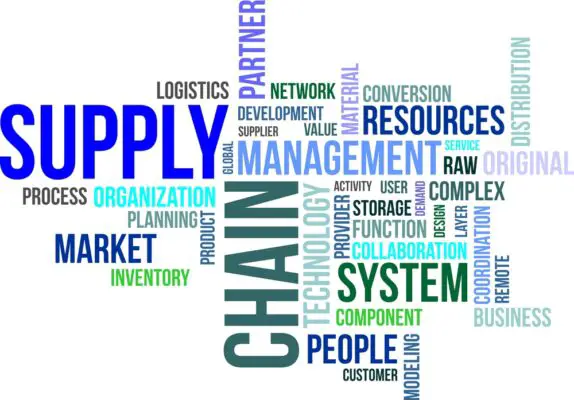An ESRMP is a comprehensive framework for managing supplier risks across the enterprise. It enables organizations to identify and prioritize supplier risks, develop mitigation strategies, and monitor supplier performance over time.
In today’s global marketplace, businesses face a plethora of risks associated with their suppliers. These risks can have a profound impact on the organization’s financial, quality, delivery, and reputational performance.
As a result, it is crucial for enterprises to have a systematic approach to identifying, assessing, and managing supplier risks. This is where an Enterprise Supplier Risk Management Program (ESRMP) comes into play.
In this article, we will explore the steps involved in implementing a successful ESRMP, the benefits of such a program, and the risks associated with suppliers.
We will also discuss the essential components of ESRMP, the importance of senior leadership buy-in, and how Moody’s Analytics can help with enterprise supplier risk management.

Enterprise Supplier Risk Management Program Definition
An enterprise supplier risk management program (ESRMP) is a systematic approach to identifying, assessing, and managing risks associated with procurement from suppliers. The goal of ESRMP is to minimize the impact of supplier-related risks on the organization.
ESRMP requires a commitment from senior leadership, buy-in from key stakeholders, and robust processes and tools for identification, assessment, and mitigation of supplier risks. This program helps organizations proactively manage supplier risk and performance across the enterprise.
ESRMP helps organizations gain visibility into supplier risks across the enterprise, understand the root causes of supplier risks, and develop and implement mitigation plans to address high-risk suppliers. Collaboration between procurement, legal, finance, and other departments on supplier risk management is facilitated by ESRMP.
ESRMP typically includes four components: supplier risk assessment, supplier risk management, supplier performance management, and supplier relationship management. The first step in ESRMP is to assess supplier risks, followed by managing supplier risks, monitoring supplier performance, and managing supplier relationships.
Successful ESRMP includes assessing risks, creating a risk map, deciding on risk tolerance, and focusing mitigation efforts. Mitigation actions can include changing/diversifying suppliers and investing in data/analysis.
Definition and Goals
Defining and establishing goals for a supplier risk management plan is crucial for any organization to mitigate various risks and ensure a reliable supplier ecosystem, ultimately leading to increased organizational resilience and competitiveness.
An enterprise supplier risk management program (ESRMP) aims to identify, assess, and manage risks associated with procurement from suppliers. The goal of ESRMP is to minimize the impact of supplier-related risks on the organization.
ESRMP helps businesses better understand their supplier risks and create strategies to minimize them.
To achieve the goal of a successful ESRMP, it is necessary to have a structured, whole-company approach that involves cooperation among various departments and roles.
Identifying supplier risks is the first step, which should include a comprehensive risk map that covers all potential risk categories such as financial and supplier performance, ownership, regulatory and compliance, reputational, ESG and sustainability, cyber, resiliency and operational. Prioritizing risks is key due to limited resources.
The second step is to decide on risk tolerance, which involves creating a risk profile and defining acceptable levels of risk exposure.
The third step is to focus mitigation efforts, which may include changing or diversifying suppliers, investing in data and analysis, and implementing contingency plans.
A successful ESRMP is essential for any organization as supply chain disruption can have serious financial and reputational repercussions. Organizations must continuously monitor supplier performance and track risk reduction over time.
Moody’s Analytics can help with enterprise supplier risk management by tailoring a plan to the company’s needs. A successful supplier monitoring program helps assess and mitigate risk, which gives a competitive advantage and reduces the likelihood of reputational damage.
Implementing an ESRMP is not only important for mitigating risks but also for enhancing organizational visibility into the supplier risk landscape, making informed decisions about which suppliers to do business with, and reducing exposure to potential disruptions in the supply chain.

Risk Categories
Identifying and understanding the various categories of risks associated with suppliers is crucial for developing a reliable supplier ecosystem that is more resilient to disruption. Organizations must have a comprehensive understanding of the risks they face when doing business with suppliers.
Financial and supplier performance risks are among the most common, followed by regulatory and compliance, reputational, ESG and sustainability, cyber, and resiliency and operational risks.
Financial and supplier performance risks are related to the supplier’s ability to fulfill their contractual obligations, including delivery of goods and services, timely payment of invoices, and adherence to quality standards.
Regulatory and compliance risks relate to the supplier’s adherence to laws and regulations, such as labor laws and environmental regulations.
Reputational risks are associated with the supplier’s public image, including their ability to maintain ethical standards and avoid negative publicity.
ESG and sustainability risks are related to the supplier’s environmental, social, and governance practices, including their labor practices, environmental impact, and corporate governance structure.
Cyber risks are associated with the supplier’s susceptibility to cyber-attacks and data breaches. Resiliency and operational risks relate to the supplier’s ability to withstand and recover from disruptions, including natural disasters, supply chain disruptions, and changes in ownership.
Organizations must take an integrated approach to address all areas of risk associated with suppliers. Cooperation among various departments and roles is necessary to develop a comprehensive risk map that identifies and prioritizes risks based on their potential impact on the organization.
Prioritizing risks is key due to limited resources. Successful implementation of an enterprise supplier risk management program includes assessing risks, creating a risk map, deciding on risk tolerance, and focusing mitigation efforts.
Mitigation actions may include changing or diversifying suppliers, investing in data and analysis, and developing contingency plans to address potential disruptions.
In essence, identifying and understanding the various categories of risks associated with suppliers is an essential component of developing a reliable supplier ecosystem that is more resilient to disruption.
Organizations must have a comprehensive understanding of the risks they face when doing business with suppliers to make informed decisions about which suppliers to do business with.
Taking an integrated approach, prioritizing risks, and developing a comprehensive risk map are crucial for successful implementation of an enterprise supplier risk management program.
Prioritizing Risks
Prioritizing supplier risks is a crucial step in developing a resilient supplier ecosystem, as it enables organizations to allocate limited resources effectively and mitigate the risks that have the greatest potential impact on their operations.
This step involves identifying the risks that are most likely to occur and have the highest potential impact on the organization’s supply chain. Once identified, risks can be assessed based on various factors such as likelihood of occurrence, potential severity of impact, and cost of mitigation.
Organizations should prioritize the risks that are most critical to their operations, such as those that could result in financial loss, reputational damage, or legal liability. It is important to note that not all risks are equal, and some risks may be more important to address than others.
Therefore, it is necessary to establish a risk tolerance level and focus mitigation efforts on the risks that exceed this threshold.
In order to effectively prioritize supplier risks, organizations should create a risk map that outlines the likelihood and potential impact of each risk.
This map can be used to identify and prioritize high-risk suppliers and develop targeted mitigation plans. It is important to regularly update the risk map and reassess the prioritization of risks as new information becomes available.
In conclusion, prioritizing supplier risks is a critical step in developing an effective enterprise supplier risk management program.This requires establishing a risk tolerance level, creating a risk map, and regularly reassessing the prioritization of risks.
With a well-executed prioritization strategy, organizations can develop a more resilient supplier ecosystem and mitigate the risks that could have the greatest impact on their business.
Mitigation Actions
Mitigating supplier risks requires a strategic approach that involves targeted actions to develop a more resilient supply chain ecosystem. One effective mitigation action is to diversify suppliers. This involves spreading the risk among multiple suppliers, reducing the organization’s dependence on any one supplier.
Another mitigation action is to invest in data analysis. This involves using data to identify potential supplier risks and proactively address them before they become significant issues. This can help organizations make informed decisions about which suppliers to do business with and monitor supplier performance effectively.
A successful enterprise supplier risk management program should focus on selecting the most effective mitigation actions based on an assessment of the organization’s specific risks.
Mitigation actions should be prioritized based on the severity of the risk and the organization’s available resources. It is essential to balance the cost of mitigating supplier risks against the potential impact of those risks.
Effective mitigation actions can help organizations reduce exposure to potential disruptions in the supply chain, increase confidence in the ability to manage supplier risks effectively, and enhance organizational visibility into the supplier risk landscape.
In conclusion, mitigating supplier risks is critical for any organization. A comprehensive approach to supplier risk management involves assessing risks, developing a risk map, deciding on risk tolerance, prioritizing risks, and focusing mitigation efforts.
Diversifying suppliers and investing in data analysis are two effective mitigation actions that organizations can take to develop a more resilient supply chain ecosystem.
A successful enterprise supplier risk management program requires a structured, whole-company approach that involves cooperation among various departments and roles.

Frequently Asked Questions
How can ESRMP benefit small businesses with limited resources?
Small businesses with limited resources can benefit from implementing an enterprise supplier risk management program (ESRMP) in several ways. ESRMP can help small businesses reduce costs associated with supplier risk, improve communication and collaboration between organization and suppliers, and enhance organizational visibility into the supplier risk landscape.
ESRMP also helps organizations make informed decisions about which suppliers to do business with, mitigate risk within the supply chain, reduce exposure to potential disruptions in the supply chain, and increase confidence in the ability to manage supplier risks effectively.
A structured, whole-company approach to ESRMP gives small businesses a competitive advantage and less likelihood of reputational damage with successful monitoring and mitigation.
What are some common challenges in implementing an ESRMP and how can they be overcome?
Implementing an enterprise supplier risk management program (ESRMP) can be a challenging task for any organization. Common challenges include a lack of commitment from senior leadership, limited resources, and difficulty prioritizing risks.
Additionally, organizations may struggle to gain buy-in from key stakeholders and build effective relationships with suppliers. To overcome these challenges, organizations should develop a structured, whole-company approach to ESRMP that includes regular risk assessments, risk mapping, and mitigation efforts.
A successful ESRMP requires cooperation among various departments and roles within the organization, as well as a focus on creating a reliable supplier ecosystem that is more resilient to disruption.
How can ESRMP help organizations comply with regulatory requirements related to supplier risk management?
Enterprise supplier risk management programs (ESRMPs) can assist organizations in complying with regulatory requirements related to supplier risk management. These programs provide a systematic approach to identifying, assessing, and managing risks associated with procurement from suppliers.
ESRMPs help organizations better understand their supplier risks and create strategies to minimize them. They require a commitment from senior leadership, buy-in from key stakeholders, and robust processes and tools for identification, assessment, and mitigation of supplier risks.
ESRMPs facilitate collaboration between procurement, legal, finance, and other departments on supplier risk management, which can help organizations reduce costs associated with supplier risk and enhance organizational visibility into the supplier risk landscape.
How can ESRMP be integrated with other risk management programs within an organization?
Integrating ESRMP with other risk management programs within an organization is crucial to achieving a comprehensive risk management strategy.
Additionally, sharing data and information across departments can lead to a more accurate and holistic understanding of the organization’s risks. When integrating ESRMP with other risk management programs, it is important to ensure that the program aligns with the organization’s goals and values and is supported by senior leadership.
What role do technology and data analysis play in ESRMP and how can they be effectively leveraged?
Technology and data analysis play a crucial role in Enterprise Supplier Risk Management Programs (ESRMP) as they enable organizations to identify, assess, and mitigate supplier risks more effectively.
The use of technology and data analysis allows organizations to gain a deeper understanding of their supplier risks, track supplier performance, and create a more reliable supplier ecosystem.
As such, technology and data analysis are essential components of any successful ESRMP.

Conclusion
In conclusion, implementing an Enterprise Supplier Risk Management Program (ESRMP) is an essential part of managing supplier risks in today’s global marketplace.
A successful ESRMP requires a comprehensive approach that includes identifying risk categories, prioritizing risks, and implementing mitigation actions. It also involves obtaining senior leadership buy-in and utilizing tools and resources such as those provided by Moody’s Analytics.
The benefits of implementing an ESRMP are numerous, including improved supplier performance, increased supply chain resilience, enhanced reputation management, and better financial outcomes.
However, the risks associated with suppliers cannot be entirely eliminated, and organizations must remain vigilant in their risk management efforts.

Chris Ekai is a Risk Management expert with over 10 years of experience in the field. He has a Master’s(MSc) degree in Risk Management from University of Portsmouth and is a CPA and Finance professional. He currently works as a Content Manager at Risk Publishing, writing about Enterprise Risk Management, Business Continuity Management and Project Management.
